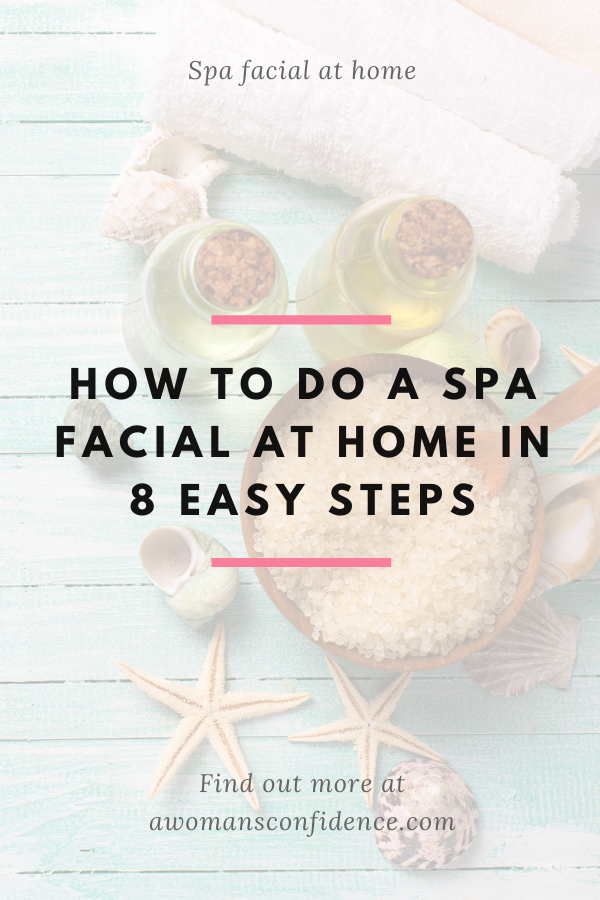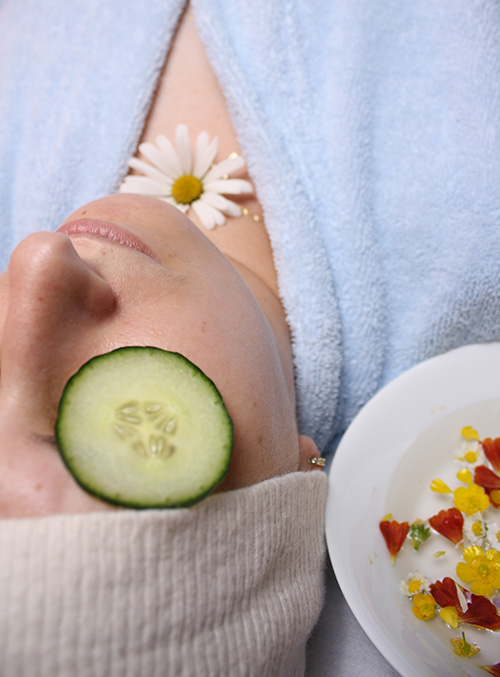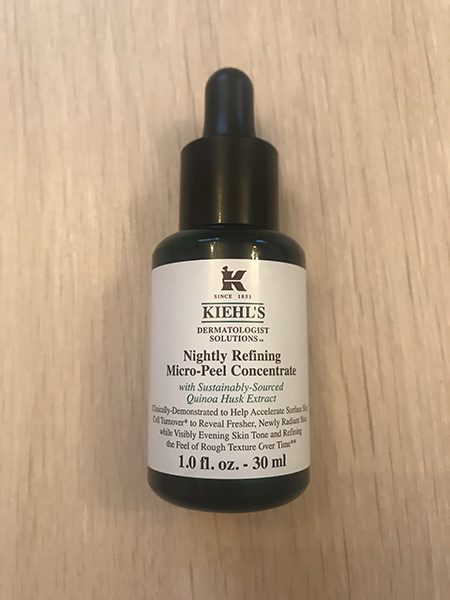Last updated on 1st January 2023 by Sarah Sarsby

For today’s post, I have a wonderful and educational guest blog post from Simone over at The Skincare Culture on how to do a spa facial at home in 8 easy steps.
As with all of my guest bloggers, I’d like to say a huge thank you for Simone for providing such a helpful blog post for my site. I appreciate all of the time, knowledge and effort that goes into each post and this one is particularly long, so thank you so much, Simone.
This post is probably one of my favourite guest posts to ever appear on A Woman’s Confidence. It’s taught me a lot about skin that I didn’t know before about and has laid out some super simple ways to get gorgeous skin at home.
Simone is an esthetician which is amazing as it means that all of her tips are backed up with qualifications and her expertise, so I’m honoured to have her write for my site.
I’ve linked Simone’s blog and social media handles at the bottom of this post, so don’t forget to follow her and stay up-to-date on her latest tips in skincare (I know I have done).
I hope you love this post just as much as I did!

About The Skincare Culture
Coping with acne breakouts made me endeavour and find a solution to my problem, also inspiring me to pursue a career in this beautiful and rewarding industry. I’m a certified esthetician and my goal with creating my blog – The Skincare Culture – is to educate my readers on how to take care of their skin.
Getting a facial is probably one of every woman’s favourite splurge.
Nobody can blame us since the steam, mask, face massage and a very pleasant and friendly esthetician can certainly make our day feel like the perfect break from the outside world.
Getting regular facials can help improve your skin and keep it healthy and glowing. But we are all aware that this little luxurious getaway of ours can cost quite a lot.
It is not something that everyone can afford to do very often besides your esthetician’s kind words of recommendation to come back every month. I mean, we can all agree that we would if we could, which unfortunately isn’t always the case.
However, fortunately, you can get similar results by sticking to a good home care regimen such as exfoliating, steaming and using a face mask at home.
The big secret to clear and bright skin is basically understanding the correct order of each step and using the right products for your skin type.
Perhaps you can take mental notes next time you visit your favourite spa salon for a facial. Or the easier thing to do is to just continue reading to find out all about how to do a spa facial at home in 8 easy steps.
1. Set the mood

If you are lucky enough to have the house all for yourself on the day you decide to do a facial for yourself, you should totally consider going that extra step of pampering yourself and setting the mood with some scented candles or even incense sticks to create an ambience for your mind to unwind.
Playing soft and mellow music in the background can help relax your mind and put all your worries on hold. Self-care is important and tackling one problem at a time is always better when you are approaching it with a clear head.
For more on self-care, check out my 14 simple self-care ideas.
You don’t want to overstress the situation so you don’t really need to bother much that everything needs to be perfect. Remember that all you have to do is relax and take full advantage of having some space for yourself.
2. Cleanse your skin
Now that we have spared an extra few minutes to prepare the room and set the mood, it is time to move on to the first and most important step at the beginning of each facial.
Our skin is constantly exposed to environmental aggressors and pollution throughout the day.
From makeup, sebum, and sweat to small dirt particles and free radicals, this constantly keeps accumulating at the surface of our skin and could potentially contribute to the clogging of pores and breakouts.
That’s why it is important to start each facial with a good cleanse, so you can remove every last trace of dirt, excess oil and pollution from the surface of your skin and leave a blank canvas for all the awesome products you are about to use throughout your facial.
How to choose the right cleanser for your skin?
The skin’s barrier function is one of the things that can get disrupted without trying too hard.
It might be tempting to have that squeaky-clean feel after cleansing your face but this only means that you are potentially disrupting the fine oil film barrier produced by the skin to keep itself protected, hydrated and clean.
This is called the acid mantle and it is a combination of sweat and sebum.
Because we don’t want this for our delicate skin, it is of the utmost importance to find a cleanser that suits your skin.
Opting for cleansers that have a milky texture and a balanced pH is a good match for any skin type, including oily skins because this skin type also needs hydration to remain healthy.
3. Exfoliate
Facial peels are the perfect product that is taking exfoliating a step further in the skincare game. This is a gentle exfoliating formula that is especially recommended for sensitive or acne-prone skins.
While abrasive scrubs are something that we all have solid experience with, they are now starting to move to the side, making a way for the new specially formulated chemicals to help resurface dead skin cells and reveal a brighter, younger complexion underneath.
The chemical compounds normally used to formulate this type of exfoliation are Alpha and Beta Hydroxy Acids such as glycolic, lactic, malic, mandelic, citric and salicylic acid.
They work their magic to gently slough away dead skin cells and promote cell turnover for clear skin and smooth complexion.
How to choose the right exfoliator for your skin?
If you are someone who has never tried this type of exfoliation but are curious to do so, there are some things you should consider before spending your money on something that may not work with your skin type.
While these are generally gentler formulas and are becoming more and more recommended by skin experts because of doing absolute wonders with exfoliating your skin, there are a few differences in their use.
While Alpha Hydroxy Acids are more effective in treating mild pigmentation issues such as sun-damaged skin and age spots, Beta Hydroxy Acids, on the other hand, deliver deeper exfoliation and are more recommended for problematic, acne-prone skin.
4. Do a facial wrap
One of the most relaxing parts of having a facial is when your esthetician carefully wraps a hot, moist towel over your face for a few minutes.
Many spas commonly use this technique as an alternative to steam because the mixture of heat and moisture loosens and opens the pores in preparation for extractions and the beneficial products that are to follow during the facial.
Besides being very beneficial for the skin, this practice promotes an indulgent feeling of relaxation and well being and there is absolutely no reason that you cannot do it at home as a part of your luxurious at-home facial.
For ultimate relaxation and stealing some extra restoring skin properties, soak your face towel in hot water infused with chamomile before wrapping it over your face.
5. Apply a purifying mask

Now that your pores are soft and open, it is time to apply a good detox mask for the most beneficial effect.
While clay masks are usually recommended for oilier skin types and congested skins, that doesn’t mean that dry skin wouldn’t benefit from a gentler clay mask mixed with appropriate ingredients.
At a molecular level, clay has a negative electrical charge and this provides surprisingly powerful drawing effects as most toxins and free radicals, on the other hand, are positively charged.
Therefore, the clay absorbs these toxins and naturally clears the skin of their harmful effects.
How to choose the right clay mask for your skin?
As I already mentioned above, if you have oily or acne-prone skin, chances are that you are already familiar with clay masks and how well they work.
Kaolin clay or China clay is a gentle powder with powerful absorbent properties. It is known to absorb excess oils sitting on the surface of the skin and it draws out impurities from the skin.
If you have oily or acne-prone skin, this type of clay will become your best friend as you will finally be able to kiss your clogged pores goodbye.
Calamine clay, on the other hand, helps lighten dark spots and keeps the skin hydrated and free of breakouts.
Even if you don’t struggle with acne breakouts or congestion, clay can still offer a hydrating experience if your skin is on the dry side.
All you have to do is look for those that contain hydrating ingredients such as glycerin and hyaluronic acid, or if you are preparing your own powder, make sure to mix it with almond or olive oil and add a little bit of hydrating, rose water or chamomile toner.
6. Tone
Once you remove the face mask, it is now time to tone the skin.
As we all know, toners are used to help remove excess dirt, any lingering traces of oil left on the surface of your skin, makeup and pollution.
But that doesn’t really apply to you at this point of your facial, right?
Toners are also used to freshen and balance the pH value of your skin and prepare it for every product that comes after the regular daily cleansing as it helps the active ingredients from products to penetrate into the skin more rapidly.
How to choose the right toner for your skin?
Traditional toners consist of extracts that help soothe and freshen your skin. They vary in strength and achieve a toning and cooling effect without any harsh stinging.
They act by mildly tightening and moisturising your skin and prevent it from drying out.
Gentle toners, specially formulated for sensitive skin types don’t contain any irritating ingredients like alcohol-based astringents and will promote a clean and glowing skin.
The mildest and most beneficial for the most sensitive, dry and dehydrated skin types is a gentle rosewater toner.
There is another group of toners called astringents and although sometimes recommended, this type is essentially not going to help your skin but can possibly cause further irritation.
Astringents are the strongest acting of the toners and its strength is due to the amount of alcohol they usually contain. This irritates the skin and causes mild swelling around the pores so that they look temporarily less obvious.
They are too strong for dry or sensitive skins as they dry out the natural oils on the skin’s surface. Although oily skin types will probably not experience potential issues with this product, it is still not recommended to be used in the long run.
Some astringents contain antiseptic substances which kill surface bacteria and are useful in treating blemished skins as they help to dry out and heal pustules and prevent the formation of blackheads.
7. Sheet mask
After prepping your skin with a gentle toner, it is now time for an extra boost of hydration.
Sheet masks are face-shaped fibre masks soaked in a moisturising serum and a high concentration of active ingredients. It requires an extra 15 minutes of the serum that’s infused in your mask of choice to work by increasing the water content and nourishing your skin.
A little tip to boost the hydrating properties of this type of mask is to refrigerate the sachet before opening it and adjusting it onto your face and neck.
An extra bonus is that once removed, you can gently massage the remaining serum into your skin until fully absorbed before continuing to the last step of your facial.
How to choose the right sheet mask for your skin?
The thing everyone loves most about sheet masks is besides being extremely hydrating and cooling, these are usually fairly inexpensive.
They are recommended for all skin types and you can literally do no wrong regarding what sheet mask to use for your skin type as all skin types need a hydration boost every once in a while.
They may be made out of fibre, cotton or cellulose and all these materials allow the air to circulate and your skin to breathe.
8. Moisturise
This is the final step of every facial.
Gently massaging a moisturiser into your skin will hydrate and replenish your skin, and besides this, the light and soothing massage motions will keep the facial muscles toned and prevent the skin from sagging.
How to choose the right moisturiser for your skin?
This might feel like the most stressing and complicated part, especially with all these products on the market that can make your head spin with anxiety when it comes to choosing the right one for you.
The most common form of a moisturiser is a cream and as you did with all your skincare products, it is crucial to pick the best one based on your skin type.
A moisturiser should feel pleasant as soon as you apply it, and it will almost immediately show if your skin doesn’t agree with one.
Oily skin types: although having the ability to retain moisture better than any other skin type, still requires hydration.
Avoiding oils that give you a greasy and heavy feeling and opting for an oil-free moisturiser that contains hyaluronic acid is probably the best option for you.
Dry skin types: should look for nourishing ingredients such as shea butter, jojoba oil, and glycerin that will efficiently moisturise, give comfort and relieve the constant feeling of tightness.
Sensitive skin types: should probably avoid fragrances and opt for unscented, hypoallergenic moisturisers that contain soothing aloe and chamomile extracts.
Final thoughts

While we are sure that you won’t completely ditch visiting your esthetician for professional advice and a little bit of pampering every once in a while, we wanted to provide you with an article where we lead you how to do a spa facial at home in eight easy steps for the ultimate pampering day that doesn’t require you to leave the comfort of your own room.
Blog: The Skincare Culture
Instagram: theskincareculture
Pinterest: The Skincare Culture
Wow and here’s me thinking I know a lot about skincare. Simone’s knowledge has made me look like a total rookie!
I love how this post has been broken down into easy steps but also explains each and every point with useful pointers and education. This has been one of my favourite ever reads and I can’t wait to do my own at-home spa facial.



A face wrap sounds really relaxing! This is a fantastic idea for a little pamper or girls evening.Who doesn’t love a god exfoliate and face mask!
Brilliant post and ideas to add to your other amazing articles.
Thank you for sharing.
Alyssa xx
I agree, I’d love a pamper night with friends that would be awesome! It was nice learning the science behind everything too, I feel more informed now xx
I had my first facial last week and this post definitely includes the steps that I went through. I love the ideas here and I had no idea that you could do the hot towel wrap at home – thank you so much!
Where did you go for a facial and where was my invite :@
Yass girl I love this so much! Thanks for outlining the steps! I have to say I don’t actually follow all of these steps (I probably should, eh?)… I try to exfoliate and moisturize and use face masks. Just getting into sheet masks now so I’ll have to look into whether they are good for my face or not. Thanks for sharing girl!
I loved this post too! It seems like it’s pretty simple to do a spa facial at home, so I’ll be checking it out for myself 🙂 sheet masks are fab! Have you ever tried the Sephora ones? If not, I’d thoroughly recommend them